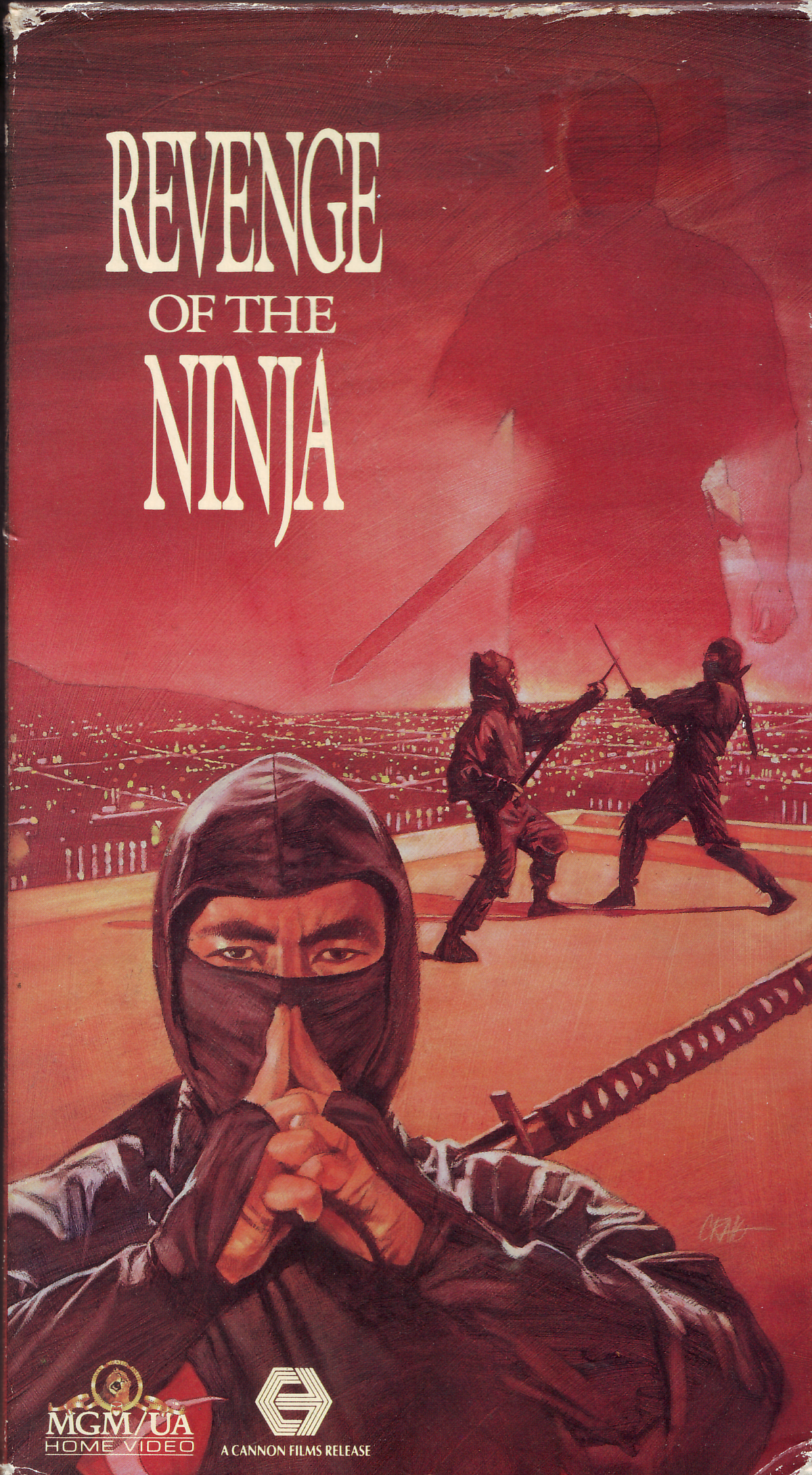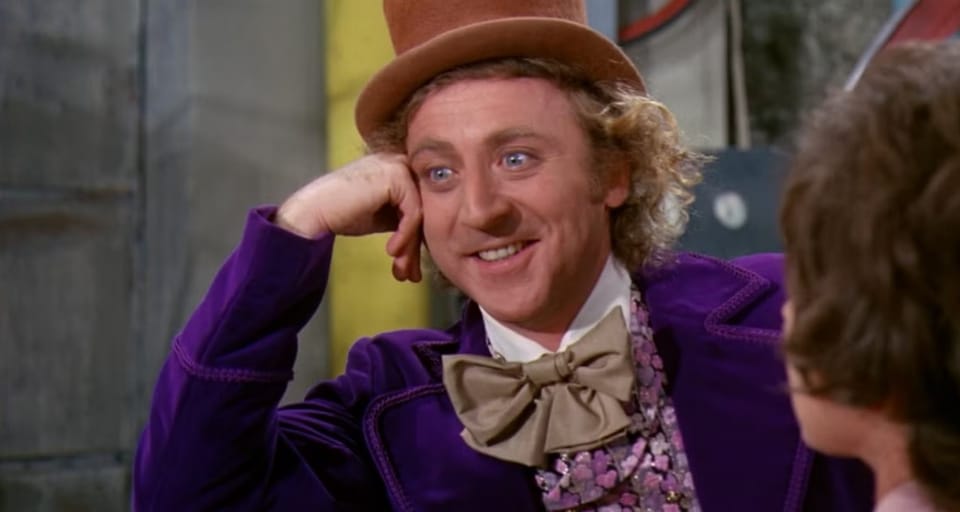Driving & Parking - The Cannon Ninja Trilogy
The importance of mythos

At the time of writing, there are three methods of ninja power transference known to science.
The first is through exposure to ninja ideas and practices. This occurs often within a place of learning, such as a ninja school. Through teaching and practical learning, regular people are trained into becoming ninjas, and set out to bring this vocation to a wider world. This is the miasma theory of ninja transformation.
The second is through an internal becoming, quite independent of environment. Often an event, sometimes traumatic, acts as a catalyst for the ninja transformation process. Yet the event is secondary, as the ninja characteristics are already present. The mental change is followed by physical ones, the acquiring of katanas, paraphanalia etc. This is the terrain theory of ninja transformation.
The third is through contact or exposure to objects or the person of someone who is already a ninja. This transference through contact then produces ninja characteristics in the newly infected individual, until they're a ninja themselves. This is the germ theory of ninja transformation.
The Cannon ninja trilogy has evidence supporting all three transformation methods, and warrants closer examination.
Enter The Ninja (1981)
Most online sources credit this as the start of the 80s boom in ninja movies. Prior to this, the genre of martial arts based films mostly came from Hong Kong, considered "Kung Fu" as a genre. I'm not convinced this is true, but the first entry in the series certainly gives out an experimental, unsure account of itself.
The film opens brightly, with colour coded ninja action. As a viewer, you're quite pleased. It's a strong opening that's thoroughly embedded in some of the tropes the genre lovingly cultivates later in the decade.
It turns out to be an exercise, a sort of graduate thesis of ninja school. Thus putting our protagonist, Cole (Franco Nero), firmly in the category of the miasma theory of ninja transformation. He graduates, puts on an awful suit, and heads back out into the world. You feel a little deflated by this, suspecting that from here, the ninja content is going to dilute significantly.
You'd be absolutely correct in this assumption.
This is where the inexperience becomes apparent. Within fifteen minutes of the graduation we're mired ankle deep in a boring TV drama plot. Cole goes to stay with a couple whose farm, though it feels like a colonial plantation, is being harrassed by the thugs of a rich oil tycoon, who wants to drill there.
This tycoon has an office around an indoor swimming pool, which seems pretty impractical.
Cole's friend Frank (Alex Courtney) has turned to alchoholism since his war experiences. His wife Mary Ann (Susan George) is forebearing, but worn down by the pressure and her husband's inaction. She might also be tired of their hideously garish house, a house furnished entirely of prizes from early episodes of the Price is Right. There's a sort of peculiar, mild, romantic tension between her and Cole. He's too upstanding to cheat on his friend, but they share empathetic, long gazes at each other that suggest it might move on, but doesn't.
The movie doesn't either, and becomes utterly tedious. It's as if Cannon had watched Hong Kong movies, but wasn't really sure about how to implement them, or which bits were important. For most of the story, he might as well have been an experienced war veteran, instead of a trained ninja. Functionally, it would make no difference to the story.
Eventually, events conspire to force him to don the ninja outfit, and it's really too late to recover the film.
Ninja movies, you realise while watching it, are trope heavy. Used right, they're magnificent. Without them, it's just some dude kicking people. Enter the Ninja has a quality not unlike 90s fmv games, an intriguing and high potential new genre that its early creators don't know how to use it correctly.
It has the feeling of having a movie, and then applying ninja theming to parts of it. The trouble with doing this is it can't disguise the mundanity of the source material. It does itself no favours either, Cole isn't required to act in any significant way until the plot is very far developed.
There's a flat feeling to the cinematography, well regressed from Hong Kong efforts from the same time. It feels like, though the film is certainly quite sincere, the use of ninja theming is a draw to get audiences to watch it. Quite a widespread practice in this genre.
It will take another couple of years for Cannon to sit, study the way, and release something better.
Revenge of the Ninja (1983)
Their studies pay off. Revenge of the Ninja is superb.
There is immediate, though tragic, ninja action. We start in Tokyo, where our protagonist, Cho (Sho Kosugi), returns home to his wife and family being attacked by ninjas. He returns in time to fight them off, but too late to save his wife.
Not all is lost, he finds his infant son, hidden in some nearby bushes. His mother, or mother in law.. or childminder.. survives as well.
Cho had been accompanied by an American friend, who immediately, thoughtlessly, pipes up with "well, now you can come to America with me and start a business." He pauses, as if aware of how astonishingly insensitive this is, "you will be safer there." Ah no, the older women points out, you won't be safer there at all.
So it will prove.
Seven years later we're in America. Within a minute, Cho's infant son Kane (Kane Kosugi) is punching and kicking some middle school bullies. This is a good example of the terrain theory of ninja transference. Clearly the son has a genetic predisposition to ninja powers.
Yet Cho has given up the ninja way, though he still has a dojo. He teaches martial arts to his son, who is honestly quite good. His other client is a friend who, even without the long red gown and no pants, would probably be categorised as 'femme fatale' in some old book on phrenology.
The plot takes off quickly. The American friend Braden (Arthur Roberts) reveals himself to be the antagonist by driving a bustleback Cadillac Seville, one of the ugliest cars ever made. The femme fatale, Cathy (Ashley Ferrare) is bad too, of course.
There's nothing remarkable about the plot, drug smuggling, double crossing, and revenge. There's a high level of ninja density, as we find Braden becoming a ninja as well, in order to avenge his ripped off drug deal.
This is director Sam Firstenberg's first film, and he shows an adeptness at the genre already. The fights are well shot, the action and stunts are very well shot, with a lot of attention to detail and variety in cuts and angles. It gets, or even defines, a lot of what makes ninja movies fun. Stunts, yes, but also things like smoke bombs, non sequitor appearances and disappearances, sudden suspensions of reality.
The two ninjas are different. There's a scene, at the end, the two facing off for the first time. They're basically casting sigils at each other. The antagonist has different ones, a different flow of motion, different shapes to Cho. This is a great touch, an underlines of the two motivations, their reservoirs of power. Which current, light or dark, that they draw strength from.
Braden also wears a djinn mask, in case further clarification was needed.
This is the heart of what makes a good ninja movie. Ninjas in film should be less like competent swordsmen, but more like mythical beings. In a medium that is a suspension of reality, they should be further suspended. Enter got this wrong, and it won't be the last film in the genre to make that mistake.
Cho somehow, even when just straight acting, seems to hold this mythological quality. He tries to be a regular person, but in a classic terrain theory way, his ninjaness is always present, subdued but not repressed.
Braden's ninja form is more possessive, requiring props, ceremony, masks. It comes across as more of a dark bargain. He can use the powers, but only for base motives such as revenge or commerce. He can only drive the ugliest Cadillacs.
The conflict between them, and the wider film, is thoroughly entertaining.
Ninja III : The Domination (1984)
If the first ninja movie of the trilogy is an attempt to learn the genre, and the second is becoming familiar and applying it, Ninja III is an act of hubris.
The opening is astounding, a ridiculous fun set piece. A ninja, with all the tropes and power firmly in his command, sets upon a golf course and assassinates a player. From then, huge swarms of police descend, surprisingly quickly, and the ninja leaps into defensive action.
At one point, he spins and drills himself into the ground. Oddly, this isn't the first ninja movie I've seen where this happens. It might be one of my favourite tropes. After a long time, a lot of stunts and a whole fuselade of police gunfire, our ninja is injured and crawls away to die.
In his dying moments, he happens upon a telephone engineer, Chrissie (Lucinda Dickey), and gives her his katana. Immediately, this causes her to hallucinate, in a classic germ theory of ninja power transfer.
She goes to the police, and is instantly, persistently harrassed by a skeevy, greasy cop who wants to go on a date.
Chrissie falls into further trances, recalling at the police station the cops that tried to kill her ninja predacessor. Honestly though, this one cop is so creepy you are almost certain he's going to be the first victim of her inherited revenge arc.
That he isn't acts as a slow burn disappointment throughout the entire film.
You also realise after the huge rush of the first scene, that this movie is starting to make some big narrative mistakes. A shame, because the ninja power transfer method is inspired. After a while, the sword starts to vibrate in the closet, lighting up, drifting out like a shiny apparition.
The problem is the same as Enter. It transfers a ninja story into an environment that's too mundane for it. It's like planting an orchid in road gravel. The good moments fail to sustain a fairly bland narrative. It loses the mythos that spirits along revenge. A greasy cop boyfriend is a terrible sidekick for trying to understand a mystery, especially a spiritual mystery.
The transformation isn't sudden enough to be fun. Chrissie is a health nut, aerobics instructor and telephone engineer. She already, the story supposes, has an adequete skillset for becoming a ninja. As argued before, that's too sensible. It tries to be plausible when there's absolutely no need to be.
Bemused by the changes that slowly try to take her over, Chrissie and the skeevy boyfriend seek out a Japanese exorcist. It's perhaps the second best scene in the movie. Silly at first, then quite creepy, a total layering of mythos on top of a secular story that really needed it. They find out she's being possessed by the evil ninja that gave her the sword, and its bent on revenge. Well sure, she took the sword, after all.
Sho Kosugi is shoehorned in to help them, but he's really not in it enough. Couldn't he have been the boyfriend?
The second half drifts into total forgettable obscurity. The goodwill given to it by the opening is totally spent. This is why it's an act of hubris. Having seemingly learned from Enter that ninja movies without tropes or mythos are liable to become dull and formulaic, this one, drunk on success, makes an identical error.
In the grim sterility of secular life, removed from any context of its origin, even the power of a ninja is too diluted to be entertaining. Like an orchid, it needs its own biosphere, its own root system. Revenge understands this where the other two don't.
It's not a bad premise, but it doesn't follow through. If the sword is capable of floating out of a closet, why not suspend reality for the rest of the transformation as well?
The way to do it might have been, make her a totally unsuitable host, a slightly slobby office worker. The transfer happens, and suddenly she finds she can throw pencils with unerring accuracy. Not too comedic, just bemusing.
She sits at home, seething at cop dramas, burning with the need to avenge herself against the local PD that killed her previous self. She has somebody in her life, Sho perhaps, who notices her changes, helps her as part of an internal overcoming of the spirit inside her. Someone with a bit of knowledge of the spirituality of the thing, not a gormless cop. Sho, like in Revenge, would lend spiritual gravity, context, knowledge.
One night, the moon comes out and she's suddenly transformed into ninja attire. She fights Sho, but is eventually defeated. It's a close one though. They work on trying to free her from the corruption before the next full moon. To fight the ninja inside herself, as well as the one without. Something like that.
Its hubris because it took the second movie and thought it could do better by giving it a western audience oriented narrative again. That it could replace the essence of the genre with something cheaper and have it come out the same.
There's a problem with secularising it. Like all spiritual traditions, when it is removed from its original conditions, it loses some of its impact.
Why it does this is another ninja mystery.
The ninja trilogy is a mixed bag. There's a whole host of lessons in how to do the genre well, and how to mess it up.
Perhaps the biggest lesson is one less concrete. Its about mythos. Without it, any ninja movie is at a distinct disadvantage. Swords and sandals movies are also tied to this inarticulate, ethereal quality. An air of the fantastical is cruical. Both must act in harmony with the spiritual forces they want to evoke.
All three are worth watching, but only Revenge is worth owning. There's a Blu-Ray release of the trilogy that is ridiculously expensive.
For that money, buy Revenge on VHS, and a working VCR. It's really the best, most authentic medium for watching them anyway, and the VCR will give more enjoyment in the long term than the other two movies will.



